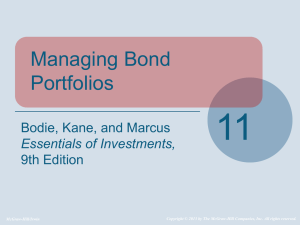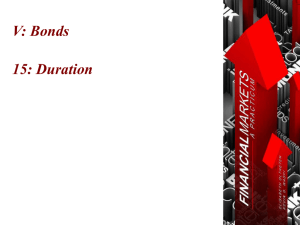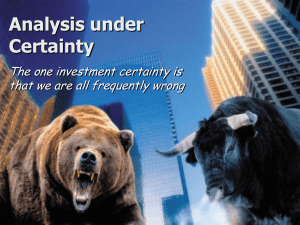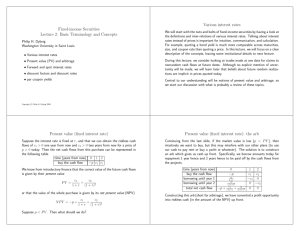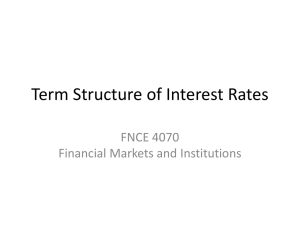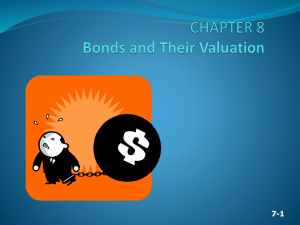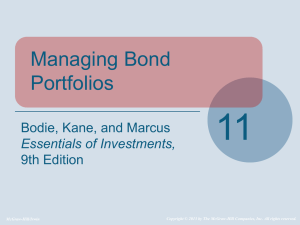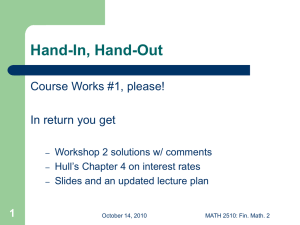Yield Curve and Term Structure of Interest Rate
advertisement
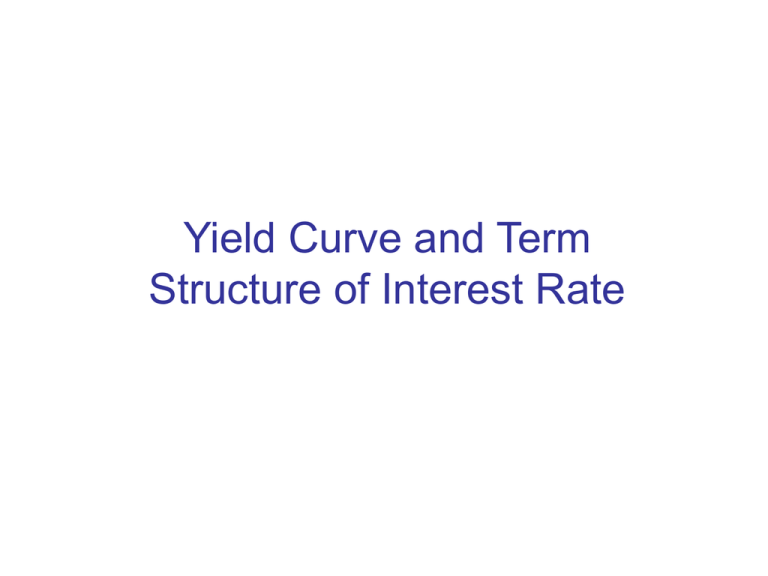
Yield Curve and Term Structure of Interest Rate • Base rate of interest – US Treasuries are “safer” than any other (US) debt security • free of credit risk • free of liquidity risk – On-the-Run Treasuries (most recently auctioned) more so than Off-the-Run Treasuries • free of call risk • but NOT free of interest rate risk – So, their yield is the minimum rate that a (US) investor would accept • This rate is called the base or benchmark rate Other rates trade at a spread (or risk premium) to the benchmark • Yield curve – “Plot of yield vs maturity” • Note: Bonds of same maturity with different coupon trade at different yields • Yield curve typically is a par yield curve (same as coupon yield curve). – For Treasuries, use mainly on-the-run issues (whose coupon issues typically trade close to par) • Different shapes of Treasury yield curve – yield increasing with maturity: “upward sloping” or “normal” – Yield decreasing with maturity: “downward sloping” or “inverted” – Hump / U-shaped structure: max/min yield at intermediate maturities • Treasury yield curve useful in setting benchmark for other bonds, but… – Yield curve is not very precise in pricing a premium or discount bond – Yield assumes a single discount rate for all cash flows • If coupons differ, cash flow patterns differ • not appropriate to use same yield to discount different cash flows even with the same maturity • The building blocks of treasury security is zero coupon bonds, or zeros – Also called pure discount bonds – The yield implied by a zero is called spot rate of interest – The price (PV) per dollar of par value for a zero coupon bond is called the discount factor • Other coupon bond, or any risk-free cash flows can be thought as a portfolio of zero coupon bonds • No-arbitrage condition says the price of the portfolio has to be the same as the sum of its component assets An Example Bond A is a one period zero traded at 3% yield Bond B is a two-period zero traded at 4% yield Bond C is a two-period coupon bond that pays 10% coupon. Bond D is a two-period coupon bond that pays 20% coupon. Q: What is the price of bond C and D? Q: What is the ytm of bond C and D? Q: What coupon rate needed to be offered for a par bond? Q: What should be the ranking of all bonds in terms of yield to maturity? • In practice, intermediate to long term treasury securities are typically issued with coupons. • Strictly speaking, term structure of interest rate and yield curve should be the yields for zeros to avoid ambiguity • We can reverse engineer the zero coupon bond yield with coupon bonds – The process is called bond bootstrapping • Sequential substitution – Q: How do we find one and two year spot rates if we only know the price of bond A and bond C? Q: How do we find one and two year spot rates if we only know the price of bond A and bond C? Forward Rates • Embedded in spot rate curve is fact that future spot rates can be “locked in” today. – This does not mean that future spot rates will actually be this “lockable” rate – But this does represent investor expectations • Risk premium – And I can arrange to borrow/lend tomorrow at this rate (which is known today) • This known future spot rate is called the forward rate, fn(t) – E.g., f5(5) = interest rate you can lock in applicable at year 5 for a deposit for 5 periods (matures at period 10) – Q: How is forward rate related to spot rates?


